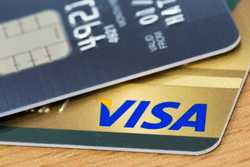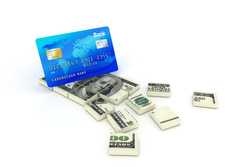How to Avoid (and Reduce) Credit Card Interest: Best Strategies

Our evaluations and opinions are not influenced by our advertising relationships, but we may earn a commission from our partners’ links. This content is created by TIME Stamped, under TIME’s direction and produced in accordance with TIME’s editorial guidelines and overseen by TIME’s editorial staff. Learn more about it.
Credit card interest makes everything you buy with a card more expensive in the end, but there are ways to help you avoid or reduce it. These strategies are especially important right now as credit card interest rates, which are typically high to begin with, are on the rise in 2023. According to the Board of Governors of the Federal Reserve, average rates on credit card accounts assessed interest came in at 22.16% as of May 2023, compared to just 16.17% in the first quarter of 2022.
Some ways to eliminate credit card interest require you to sign up for a new card altogether, but you can also track your spending and pay your bill in full before your grace period ends. If you're eager to avoid or reduce credit card interest, read on to learn how grace periods work and the different moves you can make to avoid paying interest on your purchases altogether.
With average credit card interest rates currently topping 20%, you should strive to avoid paying this added charge if you can. Not only will avoiding credit card interest save you money over the long run, but learning to use a credit card strategically can help you avoid getting trapped in a cycle of debt. Consider the following four strategies to eliminate credit card debt from your life.
First, know that credit cards offer an interest-free stretch of time between your billing date and your required payment date. This stretch of time is known as your credit card's grace period and it usually lasts at least 21 days, according to the Consumer Financial Protection Bureau (CFPB).
For example, if you get your credit card bill on the first of any given month, you will likely have until the 22nd of that month or longer to pay your credit card statement in full without incurring any interest charges.
Utilizing your credit card's grace period to buy some time requires you to be mindful when it comes to using your credit card for purchases, and to have enough cash in the bank to cover all the charges you make. Ultimately, you may have better luck staying on track with paying your balance in full each month if you begin using credit cards alongside a monthly budget or spending plan. Also, only use credit cards for planned, regular purchases you can easily cover with your monthly income.
If you're looking for ways to earn rewards and "get ahead" with credit cards without racking up debt, a range of helpful budgeting apps could help you along the way. Not only can budgeting apps make it easier to track the purchases you make throughout the month, but they also can help you allocate your income in a way that helps you stay ahead of all your bills.
Many of the best budgeting apps are even free to use, including the Mint budget tracker and planner and the basic (free) version of the Goodbudget app. Paid budgeting apps that could help you get a handle on your spending include EveryDollar (from Dave Ramsey's Ramsey Solutions) and You Need a Budget (YNAB.com).
If you already have credit card debt and you're looking for a way to get credit card interest out of your life, one of the best ways to do that is with a balance transfer credit card. Products in this niche offer 0% APR on balances you transfer from other cards for up to 21 months. Note that they typically charge an upfront balance transfer fee (usually 3% or 5% of the debt amount) for the privilege.
Where many credit cards offer 0% APR on balance transfers for a limited time, some also extend the same zero-interest offer to purchases. Cards in this niche let you use them for spending for a limited time without any interest accruing—a benefit that can be especially helpful when you're making a large purchase.
Some cards with 0% APR on purchases and balance transfers also offer rewards for spending. This can lower your balance even further if you redeem your points for a statement credit.
As just one example, the popular card_name comes with intro_apr_rate,intro_apr_duration and balance_transfer_intro_apr,balance_transfer_intro_duration, followed by a reg_apr,reg_apr_type APR. bonus_miles_full. It earns 5% cash back on travel booked through Chase, 3% back on dining and drugstore purchases, and 1.5% cash back on all other spending (after the first $20,000 spent, or after the first year). There's no annual fee, either.
card_name is a solid flat-rate earnings card with annual_fee_disclaimer annual fee. Although the 1.5% cash back doesn’t seem impressive at first glance, it becomes more valuable when combined with other rewards cards from Chase that can be redeemed for a far greater value.
This card is recommended for everyday use, whether for doctor copays or big box store purchases. It can be a large earner for cardmembers who want to get the most out of their everyday spending.
Introductory Offer:
Intro Card Rewards:
After the First Year or $20,000 Spent Card Rewards:
Additional Benefits:
Member FDIC
There are ways to reduce the amount of credit card interest you're paying as well. Consider these four options if you already have debt and don't want to apply for a balance transfer credit card, or if you're simply looking for a way to cut down on this expense.
First, you can consider tapping into your savings account to pay off credit card debt. While this strategy may seem counterintuitive if you're saving money to get ahead, the disparity in interest rates you can earn and what you pay is so great that using savings to pay off debt can make great financial sense.
We already mentioned that the average interest rate on credit card accounts assessed interest came in at 22.16% as of May 2023. In the meantime, even the best high-yield savings accounts are paying rates that top out at just above 5% APY right now. This means the interest you're paying on debt could be more than 4X what you can earn in a savings account.
If you want to pay lower interest rates but are worried a balance transfer credit card or 0% APR credit card with rewards might tempt you into spending more, look into consolidating debt with a personal loan. The best personal loans on the market today never offer 0% introductory rates, but they typically do let you consolidate debt with a lower fixed interest rate than credit cards charge, as well as a fixed monthly payment and a set repayment schedule that will not change.
The best personal loan rates are currently as low as 4.6% for those who qualify. Many personal loans for people with good credit have no origination fees or hidden fees.
Also be aware that some types of credit cards offer their own payment plans that let you avoid interest in favor of set plan fees. An example is the Amex Pay It Plan It program, which aims to help you create a plan and payment schedule for all your purchases.
With the "Pay It" part of the program, you get the chance to make multiple payments on eligible purchases throughout the month. That said, the "Plan It" part of this program lets you set up a payment plan for eligible purchases of $100 or more. When you make a purchase that qualifies, you're typically able to choose from three different payment durations and see the plan fees upfront.
How much do these plan fees cost on average? Amex offers a Plan It calculator that can give you an idea ahead of time. Based on the inputs we set up in the calculator, a $500 purchase set up through Amex Plan It could be paid off in one of three ways:
This means that, in lieu of paying credit card interest, you could pay a plan fee of $24.90, $50.16, or $74.88 to pay your $500 purchase over six to 18 months.
You may also be able to lower your credit card's interest rate, thus reducing how much you pay in interest over time. You can do this by signing up for a low interest credit card and using it for purchases, or by calling your current card issuer to ask it for a lower rate on a card you already have.
According to the Federal Trade Commission (FTC), calling the customer service number on the back of your card is the best way to find out if a lower rate is possible. The worst that can happen is being told "no."
You'll want to avoid or reduce interest on your credit card for one simple reason. Credit card interest makes everything you buy with plastic cost more—often a lot more.
For example, imagine you buy new furniture for your home for a total cost of $6,000 on a credit card with an APR of 21%. If you decided you could afford to make a $200 monthly payment on this debt, it would take you 43 months to become debt-free and you would fork over $2,582 in interest payments along the way.
This means $6,000 in furniture will actually set you back $8,582 over time, or more than 43% more than the original cost.
Obviously, the pain of credit card interest becomes even more acute if you make only the minimum payment until your balance is paid off. With a $6,000 balance at 21% and a minimum payment of just 2% ($120 per month), for example, paying this off will take 120 months (10 years). The total cost climbs dramatically to $14,383, meaning interest charges over that time cost $8,383—significantly more than the furniture set you back in the first place.
At the end of the day, credit card interest you pay is money down the drain. Money spent on interest doesn't improve the quality of your purchases or the quality of your life. It does drain your bank account and make it significantly harder to get ahead.
Our advice? Look for ways to avoid or reduce credit card interest if at all possible. Among them, opting to sign up for a 0% APR credit card and only using cards for purchases you can afford to cover in cash. By avoiding credit card interest any time you can, you'll save money and eliminate a financial burden.
You can pay your credit card bill any time of the month that works best for your budget, provided the date you choose is before your payment due date. Some people even pay their credit card off multiple times throughout the month to stay on top of spending and prevent credit card interest from accruing.
If you paid off your credit card bill but you still see an interest charge on your monthly statement, the Consumer Financial Protection Bureau (CFPB) says this may be the result of something called "residual interest." This interest charge can catch you by surprise when you have been carrying a balance and your card issuer charges interest from the time your bill was sent until the date they receive your payment.
The information presented here is created by TIME Stamped and overseen by TIME editorial staff. To learn more, see our About Us page.



